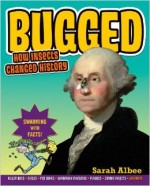Everybody likes a good book, right? And we (she said modestly) write good books. Honest! We really do!!
 |
| Rick Massie photo |
(Can you tell I'm a bit excited about this?)
The Sci/Why crew and their writer-friends have compiled a list of Science-Themed Books for Children, all written by Canadian science writers. It's organized by curricular topic, so if you're looking for books about Astronomy, Biology, Evolution, Robots, or whatever your heart (or your kids' latest enthusiasm) desires, we've got you covered. Seriously.
Please feel free to download, share, forward, promote, and use. Especially, use.
This list is a work in progress. We'll try to update it regularly and add writers and books we've missed. You can help. If you're a Canadian author who hasn't sent us your list yet, please send. If you have a favourite Canadian kids' science book that's not on the list, let us know. And send us the publication details. Or post it in the Comments s
ection below.
Additions to the list can be sent to sciwhy (at) gmail (dot) com. They won't be added immediately - we're all pretty busy - but we'll get to them.
This first incarnation of our science book list was pulled together by Adrienne Mason, Helaine Becker, Joan Marie Galat, and Claire Eamer.












